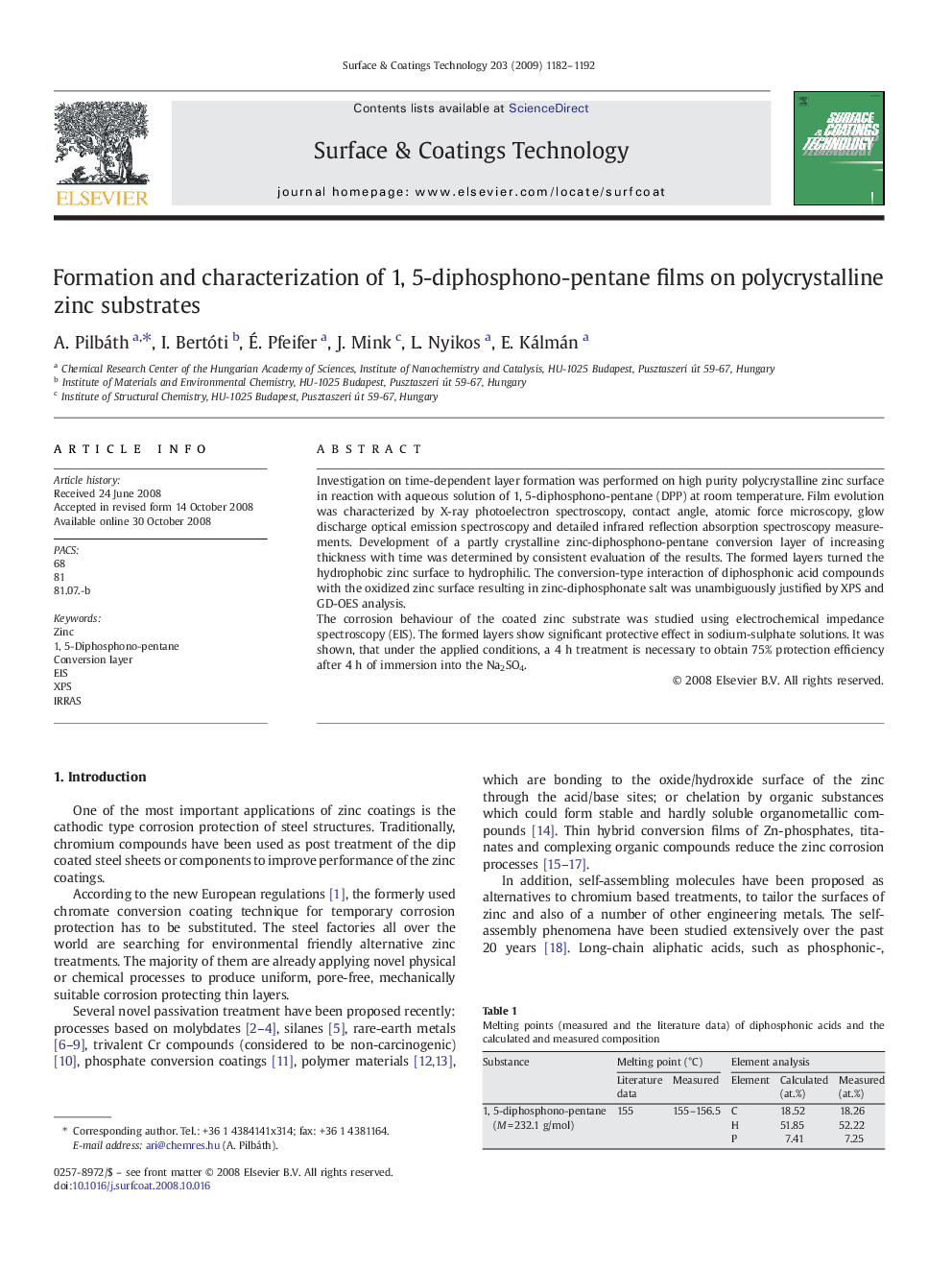| Article ID | Journal | Published Year | Pages | File Type |
|---|---|---|---|---|
| 1660109 | Surface and Coatings Technology | 2009 | 11 Pages |
Investigation on time-dependent layer formation was performed on high purity polycrystalline zinc surface in reaction with aqueous solution of 1, 5-diphosphono-pentane (DPP) at room temperature. Film evolution was characterized by X-ray photoelectron spectroscopy, contact angle, atomic force microscopy, glow discharge optical emission spectroscopy and detailed infrared reflection absorption spectroscopy measurements. Development of a partly crystalline zinc-diphosphono-pentane conversion layer of increasing thickness with time was determined by consistent evaluation of the results. The formed layers turned the hydrophobic zinc surface to hydrophilic. The conversion-type interaction of diphosphonic acid compounds with the oxidized zinc surface resulting in zinc-diphosphonate salt was unambiguously justified by XPS and GD-OES analysis.The corrosion behaviour of the coated zinc substrate was studied using electrochemical impedance spectroscopy (EIS). The formed layers show significant protective effect in sodium-sulphate solutions. It was shown, that under the applied conditions, a 4 h treatment is necessary to obtain 75% protection efficiency after 4 h of immersion into the Na2SO4.
